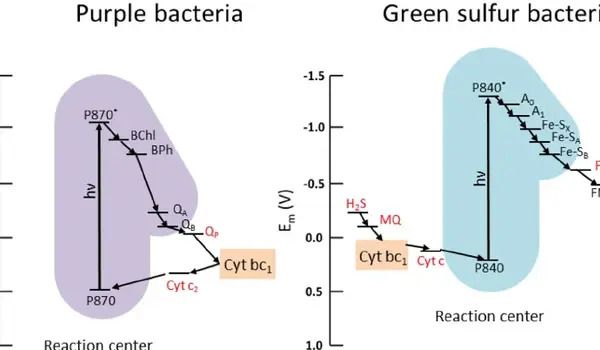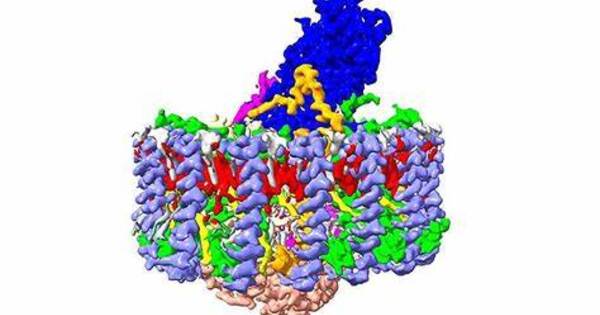Purple sulfur bacteria are a genus of photosynthetic bacteria that are adapted to anaerobic conditions high in sulfide, generally found in habitats such as sulfur springs, anaerobic mud, or deep sea vents. These bacteria use a number of adaptations to perform photosynthesis under these settings.
Photosynthesis, which converts light energy into chemical energy, is carried out by purple sulfur bacteria. Interestingly, certain species can photosynthesize even in low-calcium conditions. Researchers used cryo-electron microscopy to reveal the structure of light-harvesting complexes and describe the process that allows photosynthesis to occur under low-calcium environments.
Photosynthetic bacteria, unlike plants, do not generate oxygen as a photosynthetic byproduct because they use hydrogen sulfide instead of water to convert solar energy into chemical energy (electrons). This process is orchestrated by a protein complex, the light-harvesting 1-reaction center (LH1-RC).
Using cryo-electron microscopy, the researchers discovered the LH1-RC structures of this model species at a resolution sufficient for individual amino acid imaging. These findings indicated calcium binding only at six particular locations in the LH1 subunit.
Many PSBs flourish in calcium-rich settings like hot springs and seawater. The LH1 antenna protein is frequently linked with calcium in the three-dimensional LH1-RC structure. However, the photosynthetic mechanism of Allochromatium vinosum, a model species of autotrophic bacteria capable of living in low-calcium or soft-water settings, remains unknown, as calcium is not involved in the photosynthetic process in this model.
Using cryo-electron microscopy, the researchers discovered the LH1-RC structures of this model species at a resolution sufficient for individual amino acid imaging. These findings indicated calcium binding only at six particular locations in the LH1 subunit.

In contrast, the closely related thermophilic bacterium Thermochromatium tepidum showed calcium attachment across all 16 LH1 subunits, demonstrating that calcium binding is dependent on the amino acid sequence pattern. These findings point to an evolutionary adaption in this species, allowing it to bind tiny amounts of calcium in low-calcium conditions, boosting thermal stability for photosynthesis.
Overall, purple sulfur bacteria adapted to low-calcium settings use specific structures and colors to enable efficient light harvesting and electron transport, allowing them to thrive in sulfide-rich anaerobic habitats.
These discoveries could help to improve the efficient use of solar energy, contribute to environmental conservation, and highlight the ability of certain species to conduct photosynthesis in freshwater while detoxifying hydrogen sulfide, which is hazardous to many creatures, into sulfur.
















